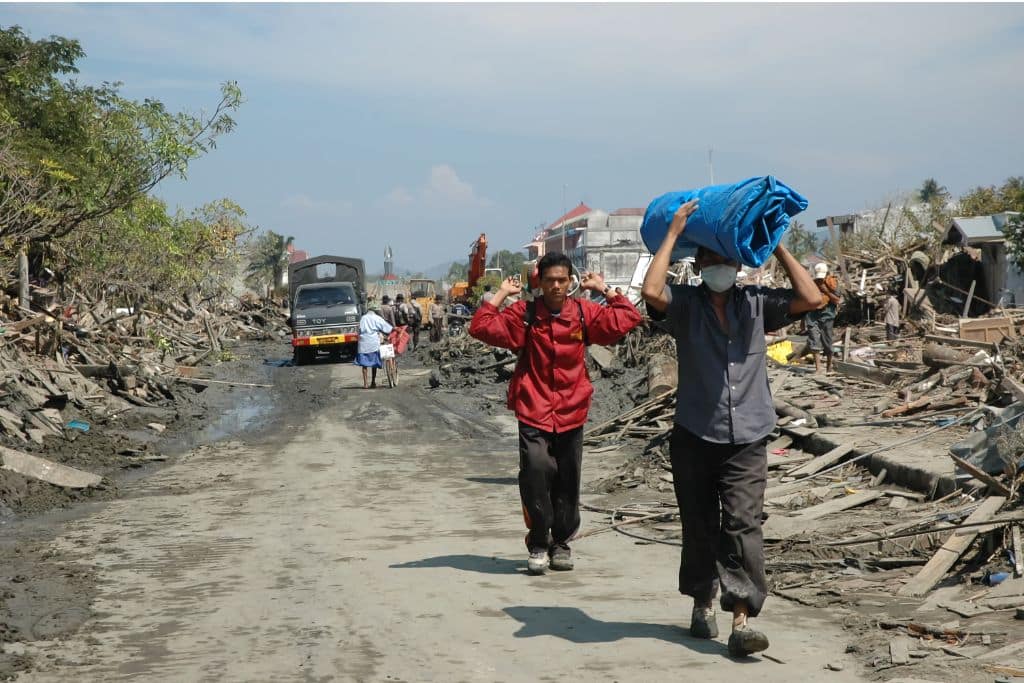One of the main topics of discussion at this year’s COP27 summit in Sharm El Sheikh, Egypt, will be the financial support that rich nations must provide to vulnerable countries which, despite their little contribution to global warming, are typically the ones that experience the worst consequences of climate change-fuelled calamities. To better grasp what’s at stake, it is first important to understand what ‘loss and damage’ compensation means and why is it so crucial to reach an agreement about it.
—
What Is ‘Loss and Damage’?
According to The United Nations Framework Convention on Climate Change (UNFCCC), the term refers to the economic, social, and cultural losses and damages caused by anthropogenic climate change to natural and human systems, including human-induced extreme weather events and slow onset events such as sea level rise, rising temperatures, ocean acidification, glacial melting, ecosystem degradation, and desertification.
Obviously, any effort being taken to curb the average temperature rise of our planet will contribute to significantly reducing the chances of loss and damage to nature and people.
At COP19, held in 2013 in Warsaw, Poland, countries established the Warsaw International Mechanism for Loss and Damage associated with climate change impacts with the purpose of supporting the implementation of appropriate approaches to address the loss and damage that especially-vulnerable developing nations endure.
The importance of addressing loss and damage is also highlighted in Article 8 of the Paris Agreement, which encourages countries to act and support actions and plans aimed at halting global warming. However, a clause required by many developed nations and signatories of the historic pact specifies that the inclusion of loss and damage in the agreement “does not involve or provide a basis for any liability or compensation.”
‘Loss and Damage’ Funding Talks
The idea behind loss and damage compensation is that countries hit by climate change-induced disasters are compensated for the costs they can’t avoid or “adapt” to. However, despite attempts to include this topic in climate negotiations at previous summits, wealthy nations have always rejected official discussions on the topic.
Oxfam estimates that the true value of climate finance between US$21-24.5 billion is the “true value” of the climate finance provided by developed countries in 2020, against a reported figure of $68.3 billion that rich countries stated was provided.
Rich nations at last year’s COP26 conference in Glasgow were expected to make some significant steps on loss and damage financing. However, any attempt to provide new funding for vulnerable countries failed. Poor countries’ demands to institute a facility for financing loss and damage were also rejected and instead, the Glasgow Dialogue on Finance for Loss and Damage was established. Focusing on talks, many argue, is not what we need, since it inevitably delays any real economic compensation even further.
You might also like: Rich Countries Block Climate Compensation at UN Talks
Expectations from COP27
With increasingly frequent and severe weather calamities bringing countries around the world to their knees, we are running out of time to cut global emissions and halt global warming.
According to a United Nations report published ahead of the COP27 summit, which began last weekend in Sharm El Sheikh, Egypt, we are set to exceed the Paris Agreement’s goal to keep global temperature rise below 1.5C. We are in fact on track to exceed the 2C mark by 2030. This means that extreme weather events and other consequences of climate change will only intensify in the years to come and, as has always been the case, poor countries are the ones who will bear the most brunt.
The historic floods that recently affected Pakistan are a clear example of this. The Asian nation, which contributes a negligible 0.8% of the global carbon footprint, was hit by unprecedented, erratic rains that resulted in mass destruction across the disaster-prone nation, killing nearly 2,000 people and displacing millions, and causing damage to cities and infrastructures for approximately US$28 billion.
You might also like: Climate Justice: Should Developing Countries be Held to the West’s Standard?
Since then, Pakistan has been demanding compensation and its climate change minister, Sherry Rehman, is now heading to the climate summit with the goal of finally getting the world to commit to helping his and other struggling nations with the growing loss and damage caused by global warming.
Whether or not COP27 will be successful in addressing the issue remains unclear. Surely, the first day of negotiations led to some promising results, with diplomats reaching a deal to add discussions of climate compensation in the summit’s agenda for the first time since Conferences of the Parties (COPs) began nearly 20 years ago.
You might also like: What Can We Expect From COP27, And What Must Happen?


















